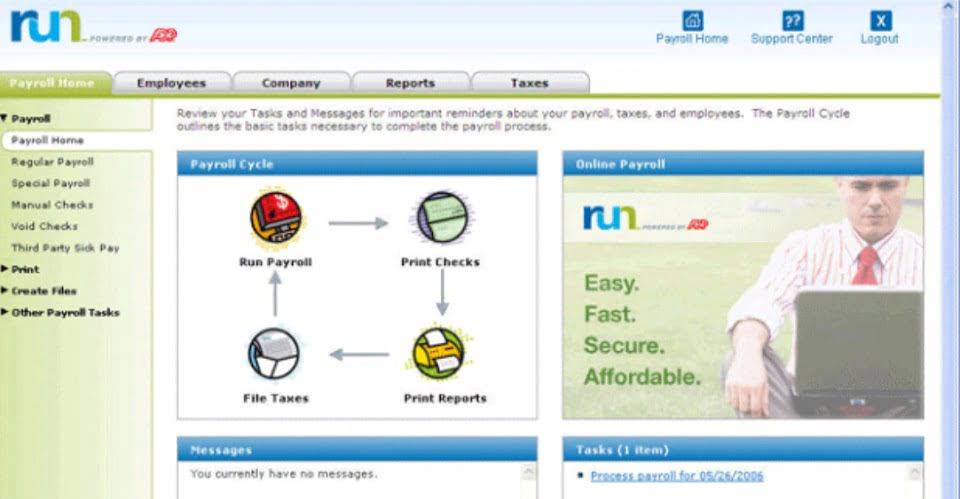Content
- What are employer shared responsibility provisions?
- What are the benefits of FTE?
- How to calculate FTEs for different laws or programs?
- Several part-time employees can add up to one full-time employee. Confused? Here’s how FTE works
- Calculating FTEs for Large Employers Under the ACA
- Calculating FTEs for Standard Accounting
- How to Calculate FTEs

You should consult your own legal, tax, and accounting advisors as part of your expansion plans. Penalties and fines cut into your bottom line and interrupt your daily operations — and could leave a permanent stain on your company’s reputation.
- Using FTEs allows companies to analyze the work effectiveness of part-time employees based on their work contributions.
- Medicare has neither reviewed nor endorsed this information.
- The expected length of a full-time schedule has changed a lot through history — full-time employees now work about 20 or 30 hours per week less than they did in the 19th century.
- It’s a simple calculation to make and you just need to know your employee details and go from there.
- The concept is also useful for comparing headcount levels among the firms within an industry, as part of an industry analysis.
- With three part-time positions, this results in a value of 1.5.
To evaluate the value or profit, it’s important to first understand the requirement margin and establish the bare minimum criteria and benchmarks. Sign up to receive more well-researched small business articles and topics in your inbox, personalized for you. Sign up to receive more well-researched human resources articles and topics in your inbox, personalized for you. I accept the treatment of my data to receive related communication about the service. The full-time equivalent is an indicator that answers many of the questions Human Resources departments need answers to. This, therefore allows them to make better decisions regarding personnel management.
What are employer shared responsibility provisions?
Want to learn more about what it is and how it can help you? Let’s take a look at a few of the more common programs you might be expected to provide an FTE figure for. How to pay contractors and freelancers in 5 simple steps Here’s a quick guide on how to pay contractors and freelancers — from worker classification to best payment methods…. 💡You can use Clockify to create project estimates, have your team track the time they spend working on the said project, and then make comparisons and track progress.

Generally, employers consider a full-time employee to work between hours a week. As per the IRS and the ACA, part-time employees work less than 30 hours a week on average. According to the IRS and the ACA, part-time employees work fewer than 30 hours a week on average. This could be an employee who works 20 hours a week, an intern who works one day a week, or an employee who is on call or only works weekends. It could also be a temporary staff member who works an irregular schedule. FTE stands for full-time equivalent and is used by businesses to calculate the total number of full-time hours worked within their business among all employees. A full-time employee is equal to one FTE; a part-time employee is equal to 0.5 FTE.
What are the benefits of FTE?
You just need to add the total amount of hours worked by all of your employees and https://www.bookstime.com/ divide it by 40h. The number you get needs to get rounded up to two decimals.
- The articles and research support materials available on this site are educational and are not intended to be investment or tax advice.
- If you use a different number of hours for full-time, divide 30 by that amount to get the FTE value.
- However, bear in mind that this only applies to positions that work 30 hours per week when assigned with a 0.75 FTE position, i.e. the IRS minimum for a full-time definition.
- If you want to run a business, or you already have one, two important things and skills you need to master are acronyms and math.
- FTE is a method of calculation to use when you want to accurately forecast specific needs of your business.
One whole FTE unit is 1.0, which can be made up of a single person or multiple employees. Let’s say a full-time measurement for your company is 40 hours per workweek.
How to calculate FTEs for different laws or programs?
Enter your employee data into the calculator in the relevant fields. Be sure to check whether the hours worked are entered on a weekly, monthly, or annual basis and edit your data appropriately. Double-check your information before pressing "calculate" to make sure that it is correct. Seasonal workers do not count toward an organization's FTE total. A seasonal worker is simply defined as employees who perform labor or service on a seasonal basis, such as retail workers during the holiday season. Employee’s total hours worked divided by the number of compensable hours in a full-time schedule during a fiscal year. Part-time employees are included as a fraction of one FTE based on how much they work.
How much FTE is 3 days weekly?
Another way to determine the FTE is based on how many days a week a person works. If an employee works 3 full days per week, the FTE is 3 working days / 5 weekdays= 0.6 FTE.
An FTE calculation for all employees in a company needs to be rounded down to the nearest whole number (usually, 1.0 FTE or greater). To track employee work hours and decide whether your employees are full-time equivalents, there are a lot of great tools for tracking teams. Many times, FTE is confused with “full-time employee”, so before we move on to the details and procedure to calculate metrics lets look at what is the difference between the two concepts.
Several part-time employees can add up to one full-time employee. Confused? Here’s how FTE works
An applicable large employer means that you have 50 or more full-time employees or a combination of full- and part-time with a total FTE of 50. So if a business has 10 employees who each work 80 hours per month, they would have 800 part-time hours. Dividing by 120 gives us 6.66, and the answer is rounded down to get six full-time equivalent employees. The company can make a different combination to satisfy this 62.5, like six full-time employees and one part-time employee to work on the project for 10 days. Or even appoint 12 full-time and one part-time resource for five days to complete the work. The company can modify and diversify the calculation by considering the project’s scope and requirements.
How do you calculate FTE for a 12 hour shift?
One FTE is 2080 hours per year (40 hours per week * 52 weeks). But since one FTE is based upon 40 hours a week, or 8 hours per day, you can just divide your daily HPD by 8 to determine your daily FTE need…. So, for 25 patients * HPD of 9.5 = 237.5 hours per day. Divided by 8 = 29.68 FTE.
If the employer had 50 or more full-time equivalent employees, they must offer affordable, minimum value health insurance to all of the full-time employees (but not to part-time employees who work fewer than 30 hours per week). FTE goes even further than solely calculating project or staffing needs. If you employ 50 or more full-time equivalent employees then you are required to offer health benefits and coverage. FTE is also calculated to see whether or not you qualify for any tax credits.
Calculating FTEs for Large Employers Under the ACA
In practice, these numbers still usually fall somewhere between 32 and 40 hours per week, with 40 hours per week being a common norm for a full-time schedule. Even today, these numbers greatly vary across countries, from the Netherlands and its average of 29 hours and 18 minutes per workweek to Columbia and its average of 47 hours and 43 minutes per workweek. The US falls somewhere in the middle when compared to other countries, with 38 hours and 35 minutes of work time per week, on Full Time Equivalent average. In this article, we’ll talk about the basics of what FTE is, what it entails, and why businesses use it. We’ll also show you how to perform various calculations that involve FTE, and provide you with automatic calculators that will help make the process easier. FTE 100% refers to a full-time employee or the equivalent of a full-time employee. In most companies, this means the employee works 40 hours, but some companies use other time amounts to describe full-time status.
- Among the methods of calculating the number of employees, the full-time equivalent is an important unit of measurement for establishing a reliable budget and managing your business strategy.
- Full-time Employees are workers who typically work for hours a week and are employed on a permanent basis.
- She received her CPA from the Accountancy Board of Ohio in 1994 and has a BS in Business Administration/Accounting.
- What’s important is that “on average” they work under 30 hours a week.
- Next, divide the total hours worked by part-time employees by 120 hours to find how many full-time employees your part-time workers make up.
- In addition, part-time employees are counted using the full-time equivalent method of adding the total number of hours worked by all part time employees in a month, and dividing by 120.
These calculations are used to clarify the company’s obligations regarding employee health benefits. However, the IRS mandates only 30 hours per week or 130 hours per month for an employee in the US to be considered full-time in terms of the type of employment. In general terms, full-time equivalent is a unit of measure that plays a role in calculations used in project management and federal programs for eligibility purposes. You must follow this definition, even if your company policy defines full-time employment differently. Therefore, under ACA, any employee who works 30 or more hours equals 1 FTE. Full Time Equivalent refers to the unit of measurement equivalent to an individual – worker or student – one unit of a work or school day, applicable in a variety of contexts.
Calculating FTEs for Standard Accounting
The FTE employee doesn’t have to actually exist, and can be a combination of part-time employees. For example, if your entire staff works part-time, the FTE employee is a hypothetical full-time worker by which your part-time workers are measured.
To calculate the FTE value for a specific position, simply divide the number of hours worked by the number of hours considered to be full-time. If you use 40 hours as full time, someone who works 35 hours has a 0.875 FTE. The student FTE is calculated based on fall student headcount as reported by the institution on the IPEDS Enrollment, which is the same as fall freeze dates. The FTE of the institution's part-time enrollment is calculated by multiplying the factors noted below times the part-time headcount.
To summarize, FTE is a very important metric which can be used in many employment situations and can be one of the determining factors for many business decision. Apart from being a performance indicator, under the paycheck protection program for small businesses, FTE is used to determine the amount of loan forgiveness for borrowers affected . While for small employers, it can be used to apply for a tax credit of 50% of paid health care premiums. From performance to loan and ultimately tax-saving mechanism, it’s important for a company to understand and deploy the FTE calculation while major making decisions. Whereas, Full-time Equivalent is a financial metric that evaluate the work performance of all employees irrespective they are full time or part-time.

The concept is also useful for comparing headcount levels among the firms within an industry, as part of an industry analysis. FTE is frequently used to assess an employee's workload and its contribution to a project, or to track cost savings in a company. FTE in salary is necessary for accounting, as well as calculating the company's costs while compensating its employees. If a company has work schedule of 40 hours a week, the employees expected to work 40 hours per week are 1.0 FTEs. The full-time equivalent converts the hours worked by part-time employees into hours worked by full-time employees. This could refer to either a single full-time employee or two or more part-time employees whose contributions add up to the equivalent of one full-time worker.
The value of an FTE is constant over time, except when the company modifies its regular staffing pattern. No, people who own the organization or company cannot be counted in the FTE and average annual wage calculation. However, if you pay your interns, you will need to include them in your calculations. Form 1095-C, which is filled out for all eligible employees (even if they don’t participate in the health plan). If a company bills clients, or pays out overtime, identifying teammates’ full-time equivalency helps identify and track organizational costs.
- A pro-rata salary is calculated for part-time employees by adjusting their working hours with the help of FTE.
- FTE is most commonly calculated for students, but it can also be calculated for faculty data.
- Let’s say a full-time measurement for your company is 40 hours per workweek.
- A single full-time employee could fulfill all 100 percent of this unit, or eight employees working five hours per week could.
- It also doesn’t give you any insight into how those numbers break down across departments and individuals.
- Using the instructions provided above, if your calculation is 50 FTE or more, you are expected to provide appropriate medical coverage for your employees.
- This number doesn’t reflect sick leave, paid time off, seasonal assistance, or paid overtime.